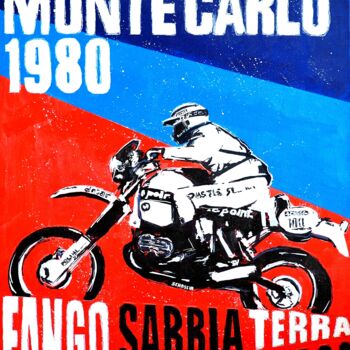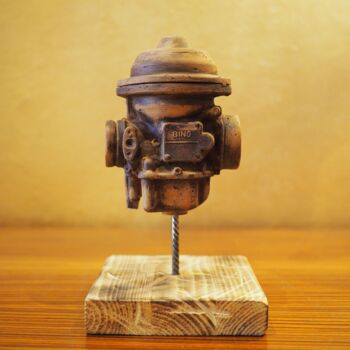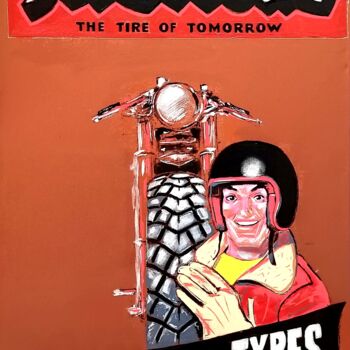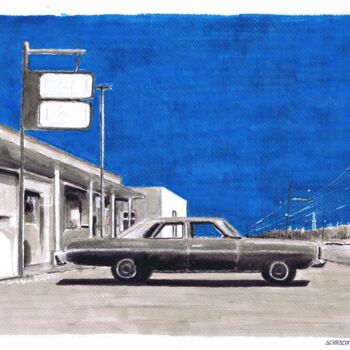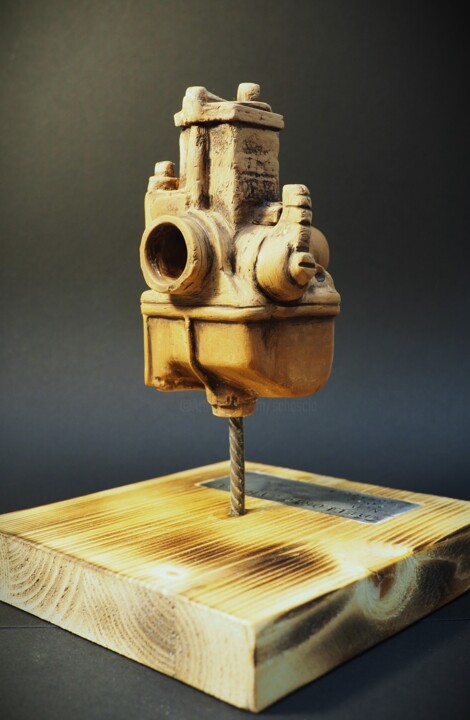
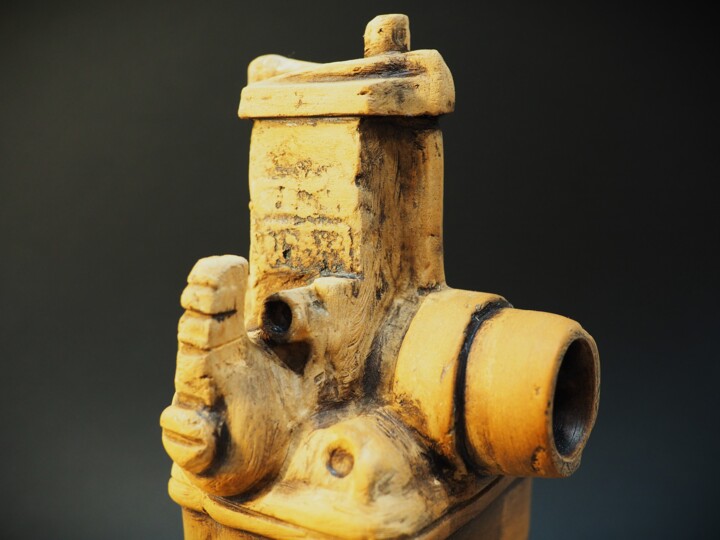
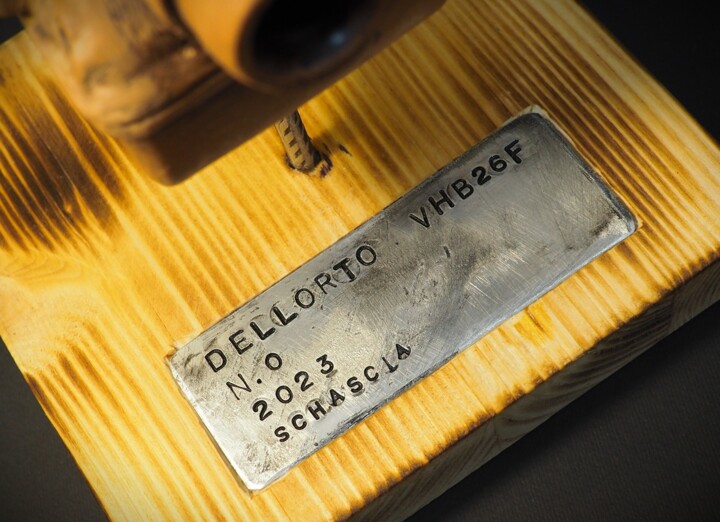
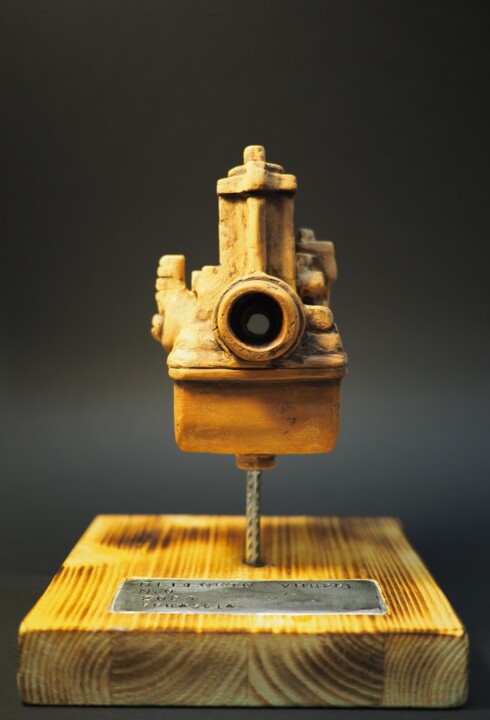
Bu sanat eserinin daha fazla fotoğrafını görmek isterseniz bize bildirin!
- işin arkası / işin tarafı
- Ayrıntılar / Imza / Sanat eserinin yüzeyi veya dokusu
- Durumdaki sanat eseri, Diğer...
Carburatore in Ceramica (2023) Heykel Schascia tarafından
Schascia tarafından satılır
-
Orijinal sanat (One Of A Kind)
Heykel,
Ahşap tarihinde
Kil
- boyutlar Yükseklik 5,1in, Genişlik 2,8in / 0.80 kg
- Sanat eserinin durumu Eser mükemmel durumda
- Dış mekan için uygun? Hayır, Bu sanat eseri açık havada görüntülenemez
- Kategoriler Heykeller $1.000'nun altında Pop art Motosiklet
Su richiesta il pezzo può essere riprodotto.
I ricercatori dell'Università di Sesto Caliente, hanno reso pubblica un'incredibile scoperta che aiuterà a comprendere meglio l'evoluzione del movimento e la struttura del motore a combustione. Alcuni misteriosi carburatori in ceramica sono stati ritrovati all'interno di due cavalli meccanici, dove erano sepolti da millenni. La scoperta è avvenuta alcuni mesi fa, ma la notizia è stata resa nota solo oggi. L'antico sito del ritrovamento è situato lungo il Fiume Ticinius, presso la città di Golasecca. Si tratta di una scoperta senza precedenti!
Dopo il ritrovamento e i necessari restauri, il Carburatore, appartenente alla famiglia Dellortius-tellus (“Internus combustionis”), è stata data in deposito al Museo di Carburatologia e Paleontologia dell’Università di Sesto Caliente. Riveste una particolare rilevanza archeologica in quanto è l'unica testimonianza di Carburatore in ceramica ben conservato rinvenuto fino ad oggi.
Esso presenta caratteristiche simili ai Carburatori attuali in metallo, da una prima osservazione del reperto, si comprende molto bene la possibilità da parte dell’uomo di trasformare uno scoppio in forza meccanica in grado di ripetere l’azione ciclicamente per erogazione di una coppia motrice. Con gli equidi – “mechanica equus” venivano usati negli scontri tra carri e nelle gare di velocità sul quarto di miglio negli ippodromi (“hippodrŏmus, gr. ἱππόδρομος hippodromi giardini di forma allungata”) Romani e Greci, è un’eccezionale scoperta, che ci fornisce un importante tassello per comprendere il passaggio del cavallo a combustione interna (“Romanesque equites mechanici Guzius”) confermando come l’evoluzione del motore proceda in maniera graduale da millenni.
Ad oggi risulta ancora difficile per gli scienziati definire con precisione assoluta da quali antichi mammiferi meccanici derivino questi Carburatori “Dellortius – Guzius V-35”. Quel che è certo è che la scoperta ha contribuito a far maggior chiarezza a riguardo. Chissà, magari un giorno i paleontogi e i geologi ingegneri meccanici scienziati di tutto il mondo riusciranno a risolvere questo spinoso grattacapo.
Bufala /'bufala/ s. f. [da bufalo]. - 1. (zool.) [femmina del bufalo]-[affermazione falsa, inverosimile]
Researchers at the University of Sesto Caliente have made public an incredible discovery that will help to better understand the evolution of movement and the structure of the combustion engine. Some mysterious ceramic carburetors have been found inside two mechanical horses, where they had been buried for millennia. The discovery took place a few months ago, but the news was only disclosed today. The ancient site of the discovery is located along the Ticinius River, near the city of Golasecca. This is an unprecedented discovery!
After the discovery and the necessary restorations, the carburetor, belonging to the Dellortius-tellus family (“Internus combustionis”), was given on deposit to the Museum of Carburatology and Paleontology of the University of Sesto Caliente. It is of particular archaeological significance as it is the only evidence of a well-preserved ceramic carburetor found to date.
It has characteristics similar to the current metal carburettors, from a first observation of the find, it is very well understood the possibility for man to transform a burst into a mechanical force capable of repeating the action cyclically for the delivery of a driving torque. With the equids – “mechanica equus” they were used in clashes between chariots and in speed competitions on the quarter mile in hippodromes (“hippodrŏmus, gr. ἱππόδρομος hippodromes gardens of elongated shape”) Romans and Greeks, it is an exceptional discovery, which it provides us with an important element for understanding the passage of the horse to internal combustion (“Romanesque equites mechanici Guzius”), confirming how the evolution of the engine has been proceeding gradually for millennia.
To date, it is still difficult for scientists to define with absolute precision from which ancient mechanical mammals these “Dellortius – Guzius V-35” carburetors derive. What is certain is that the discovery has helped to clarify the matter. Who knows, maybe one day paleontologists and geologists mechanical engineers scientists from around the world will be able to solve this thorny headache.
İlgili temalar
SchasciaDellortoReperto ArcheologicoDisegno MotociclettaVergaser-Skulptur
Sadece eğlence için ve canım istediğinde tasarla, Cafe Racer-Özel-Klasik İtalyan ve Yabancı bisikletler.
-
Milliyet:
İTALYA

- Doğum tarihi : 1976
- Sanatsal alanlar:
- Gruplar: Çağdaş İtalyan Sanatçılar









